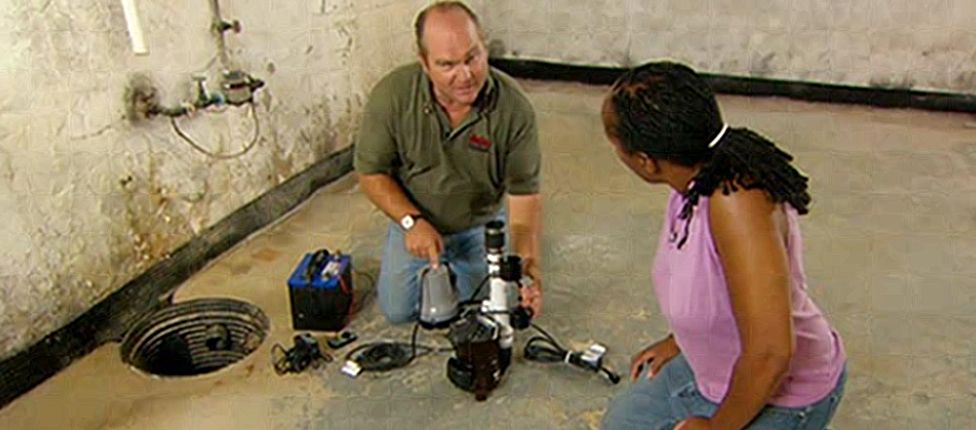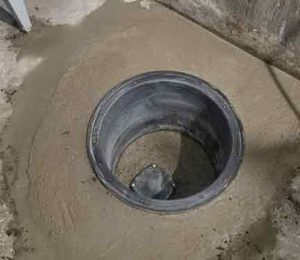Just how do you actually feel about How to Care for Your Sump Pump?

Sump pumps are vital parts in numerous homes, especially in areas susceptible to flooding or too much moisture. They assist prevent water damages by successfully eliminating excess water from basements or crawl spaces. However, like any other home appliance, sump pumps need routine maintenance to ensure they function successfully when required one of the most. Cleaning your sump pump is a vital part of its maintenance, and understanding how to do it properly can save you from pricey repairs and possible disasters.
Intro
Preserving a clean sump pump is crucial for its appropriate performance and long life. Disregarding this vital job can bring about clogs, breakdowns, and eventually, water damage to your building. Consequently, finding out just how to clean up a sump pump is important for home owners who count on these devices to maintain their basements dry and secured.
Recognizing the Sump Pump
Before diving into the cleansing process, it's vital to have a basic understanding of how a sump pump works. Generally set up in a pit or container listed below the cellar floor, a sump pump includes numerous essential elements, consisting of a pump, a float button, and a discharge pipeline. When water collects in the pit, the float switch turns on the pump, which then pumps the water out with the discharge pipe, away from the structure's structure.
Indications of a Dirty Sump Pump
Knowing when your sump pump needs cleansing is critical for preventing potential breakdowns. Some usual signs that show a dirty sump pump consist of odd noises throughout operation, minimized water circulation, and noticeable debris in the pit. If you observe any of these signs and symptoms, it's necessary to cleanse your sump pump promptly to stay clear of any kind of further issues.
Getting ready for Cleansing
Before you begin cleaning your sump pump, it's necessary to take some safety and security precautions. Start by shutting off the power to the pump to stay clear of any type of electrical accidents. In addition, use proper safety gear, such as gloves and safety glasses, to safeguard yourself from dust, debris, and possible virus.
Detailed Guide to Cleansing a Sump Pump
Shutting Off the Power
Begin by disconnecting the power supply to the sump pump to prevent any accidents while cleaning.
Eliminating Particles and Dirt
Utilize a pail or an inside story to get rid of any type of visible particles, dirt, or debris from the sump pit. Dispose of the particles appropriately to avoid it from obstructing the pump or the discharge pipeline.
Cleaning up the Pump and Drift Change
When the pit is clear of debris, very carefully get rid of the pump from the pit. Check the pump and the float button for any kind of indicators of damages or wear. Use a soft brush or fabric to clean up the surfaces and eliminate any type of built up crud.
Purging the System
After cleaning up the pump and float switch, purge the sump pit with clean water to eliminate any continuing to be dirt or debris. This will assist guarantee that the pump runs efficiently and efficiently.
Checking for Appropriate Performance
Before reinstalling the pump, perform a quick examination to ensure that the float button activates the pump appropriately. Put some water right into the sump pit and observe the pump's procedure. If whatever is operating appropriately, you can reassemble the pump and reconnect the power supply.
Maintenance Tips to Maintain Your Sump Pump Clean
In addition to routine cleansing, there are a number of maintenance suggestions you can follow to maintain your sump pump in optimal condition:
Final thought
Cleansing your sump pump is a crucial facet of its upkeep and ensures that it operates properly when you need it the most. By following the actions described in this guide and including routine maintenance right into your routine, you can prolong the life expectancy of your sump pump and secure your home from water damage.
6 STEPS ON HOW TO CLEAN A SUMP PUMP PROPERLY
UNDERSTANDING SUMP PUMPS
Your sump pump plays a crucial role in protecting your home by managing and removing excess water. It primarily functions as a “shield”, guarding your basement against the damaging effects of water accumulation. The pump is housed in a sump pit in the lowest part of your basement, and its job is to pump out any water that collects there.
During heavy rainfalls or when snow melts rapidly, water can infiltrate your basement, posing potential risks like flooding, structural damage, and harmful mold growth. Here, the sump pump springs into action, pumping out the intruding water and directing it away from your home.
SAFETY FIRST
Before cleaning, remember to prioritize safety. Disconnect the sump pump from the power source to prevent any accidental electric shocks. Also, wear sturdy gloves to protect your hands from any sharp or dirty components within the pump.
REMOVE THE SUMP PUMP
After ensuring your safety, the next step is to remove the sump pump from its pit. Doing this might require careful maneuvering as you don’t want to damage any pump components. Once removed, clean the sump pit to remove any accumulated debris or sludge.
INSPECT THE PUMP
Inspect the pump for any visible signs of wear or damage. Check the power cord, float switch, and impeller housing. If any components look worn out or damaged, consider replacing them to ensure optimal performance.
CLEAN THE PUMP
Thoroughly clean the pump with warm, soapy water. Make sure to rid it of any dirt, gravel, or other debris that might impede its performance. You can use a toothbrush to clean the small, hard-to-reach parts of the pump.
REINSTALL THE SUMP PUMP
Reinstall the pump into the sump pit Make sure it’s positioned correctly to remove the water effectively Once it’s back in place, reconnect it to the power source TEST THE PUMP
Finally, pour some water into the pit to ensure the pump works correctly. It should start automatically and begin pumping out the water; if it doesn’t, check the power source and the positioning of the pump.
Remember, while cleaning your sump pump is an essential part of home maintenance, hiring a professional plumber for a thorough inspection and cleaning at least once a year is also important. This will ensure that your pump is in optimal condition, ready to protect your home from potential water damage.
BEST PRACTICES FOR CLEANING SUMP PUMP DISCHARGE PIPES
Regular Inspection: Regularly inspect your discharge pipes, especially during heavy rainfall or snowmelt periods. Look for any signs of blockage or damage. Early detection of problems can prevent serious issues down the line. Periodic Cleaning: Over time, sediment and debris can accumulate in the discharge pipes, impeding the flow of water. Regular cleaning helps keep the pipes clear and functioning efficiently. You can use a high-pressure water jet to effectively clean the pipes. Insulation During Winter: In colder climates, discharge pipes can freeze, blocking the outflow of water. Protect your discharge pipes from freezing temperatures by insulating them with foam pipe insulation. This will ensure the sump pump can continue to discharge water even in freezing conditions. Proper Positioning: The discharge pipe should be positioned to direct water away from your home’s foundation. Improper positioning can lead to water seeping back into the basement. Ensure the pipe is long enough and angled correctly. Installation of a Check Valve: A check valve prevents water from flowing back into your sump pit after the pump has pushed it out. Installing a check valve helps maintain the efficiency of your sump pump and reduces the risk of flooding. Minimize Pipe Turns: Every curve or turn in the discharge pipe can decrease the efficiency of water flow. By minimizing turns and bends in your discharge pipe, you can increase the efficiency of your sump pump. https://www.fullspeedplumbing.com/how-to-clean-a-sump-pump-properly9999/

I was introduced to that editorial about Cleaning & Maintenance Tips for Your Home's Sump Pump through a good friend on our other blog. Do you know about another individual who is in to the niche? Do not hesitate to share it. Thank-you for taking the time to read it.
Here